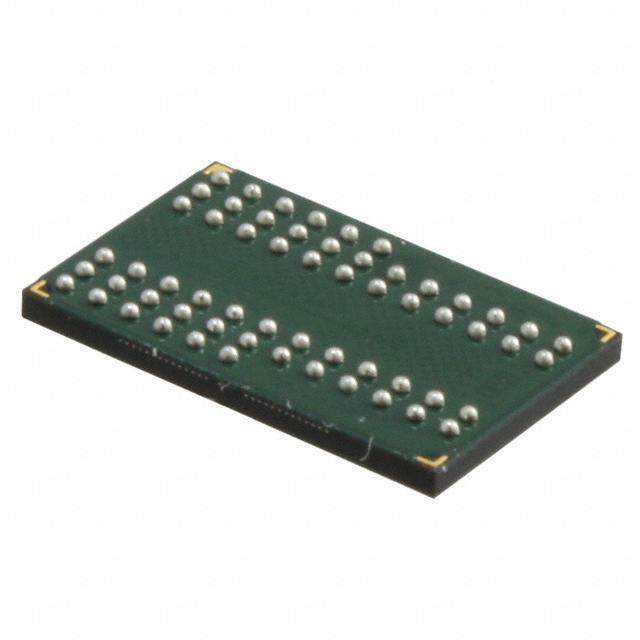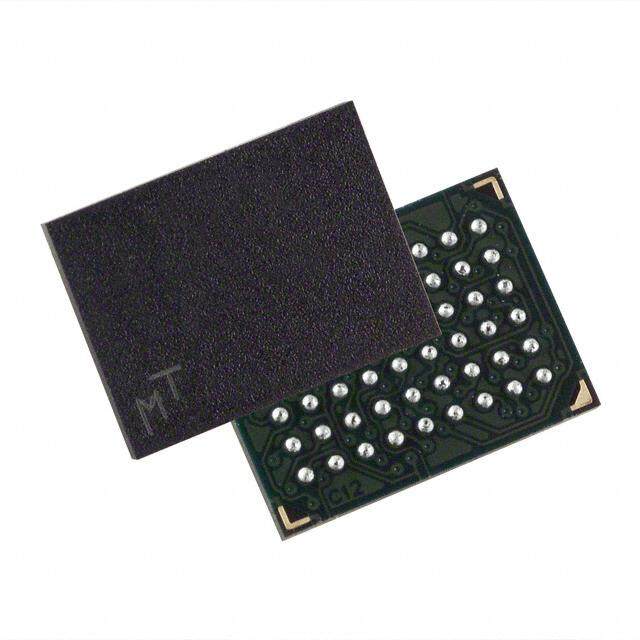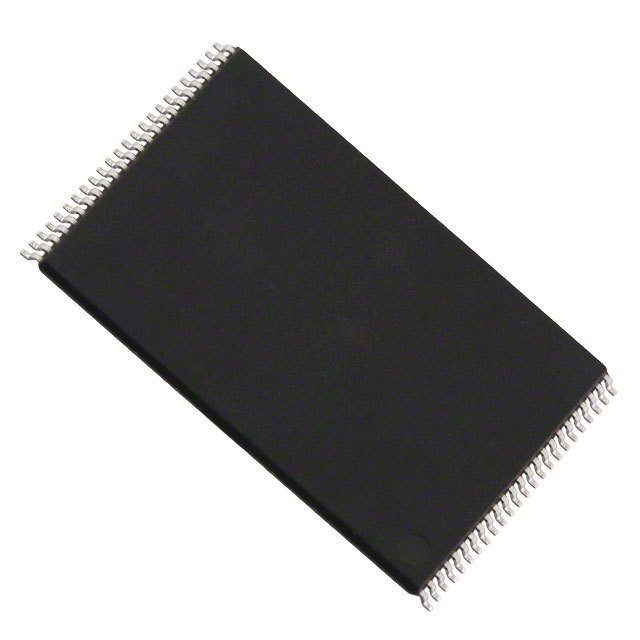- 型号: 23LCV512-I/SN
- 制造商: Microchip
- 库位|库存: xxxx|xxxx
- 要求:
| 数量阶梯 | 香港交货 | 国内含税 |
| +xxxx | $xxxx | ¥xxxx |
查看当月历史价格
查看今年历史价格
23LCV512-I/SN产品简介:
ICGOO电子元器件商城为您提供23LCV512-I/SN由Microchip设计生产,在icgoo商城现货销售,并且可以通过原厂、代理商等渠道进行代购。 23LCV512-I/SN价格参考。Microchip23LCV512-I/SN封装/规格:存储器, NVSRAM(非易失性 SRAM) 存储器 IC 512Kb (64K x 8) SPI - 双 I/O 20MHz 8-SOIC。您可以下载23LCV512-I/SN参考资料、Datasheet数据手册功能说明书,资料中有23LCV512-I/SN 详细功能的应用电路图电压和使用方法及教程。
| 参数 | 数值 |
| 产品目录 | 集成电路 (IC)半导体 |
| 描述 | IC NVSRAM 512KBIT 20MHZ 8SOIC静态随机存取存储器 512K 2.5V SPI SERIAL 静态随机存取存储器 Vbat |
| 产品分类 | |
| 品牌 | Microchip Technology |
| 产品手册 | |
| 产品图片 |
|
| rohs | 符合RoHS无铅 / 符合限制有害物质指令(RoHS)规范要求 |
| 产品系列 | 内存,静态随机存取存储器,Microchip Technology 23LCV512-I/SN- |
| 数据手册 | |
| 产品型号 | 23LCV512-I/SN |
| 产品种类 | 静态随机存取存储器 |
| 供应商器件封装 | 8-SOIC N |
| 其它名称 | 23LCV512ISN |
| 包装 | 管件 |
| 商标 | Microchip Technology |
| 存储器类型 | NVSRAM(非易失 SRAM) |
| 存储容量 | 512K (64K x 8) |
| 存储类型 | CMOS |
| 安装风格 | SMD/SMT |
| 封装 | Tube |
| 封装/外壳 | 8-SOIC(0.154",3.90mm 宽) |
| 封装/箱体 | SOIC-8 |
| 工作温度 | -40°C ~ 85°C |
| 工厂包装数量 | 100 |
| 接口 | SPI 串行 |
| 最大工作温度 | + 85 C |
| 最大工作电流 | 3 mA |
| 最大时钟频率 | 20 MHz |
| 最小工作温度 | - 40 C |
| 标准包装 | 100 |
| 格式-存储器 | RAM |
| 电压-电源 | 2.5 V ~ 5.5 V |
| 电源电压-最大 | 5.5 V |
| 电源电压-最小 | 2.5 V |
| 类型 | SPI Serial SRAM |
| 组织 | 64 k x 8 |
| 速度 | 20MHz |




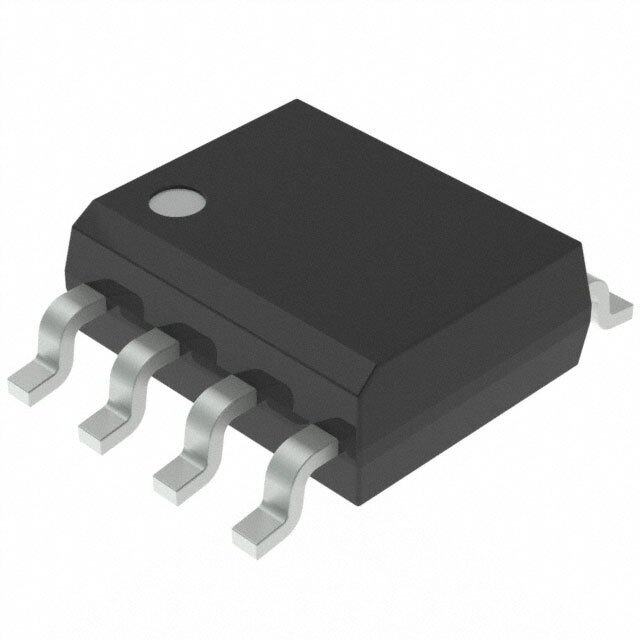

- 商务部:美国ITC正式对集成电路等产品启动337调查
- 曝三星4nm工艺存在良率问题 高通将骁龙8 Gen1或转产台积电
- 太阳诱电将投资9.5亿元在常州建新厂生产MLCC 预计2023年完工
- 英特尔发布欧洲新工厂建设计划 深化IDM 2.0 战略
- 台积电先进制程称霸业界 有大客户加持明年业绩稳了
- 达到5530亿美元!SIA预计今年全球半导体销售额将创下新高
- 英特尔拟将自动驾驶子公司Mobileye上市 估值或超500亿美元
- 三星加码芯片和SET,合并消费电子和移动部门,撤换高东真等 CEO
- 三星电子宣布重大人事变动 还合并消费电子和移动部门
- 海关总署:前11个月进口集成电路产品价值2.52万亿元 增长14.8%
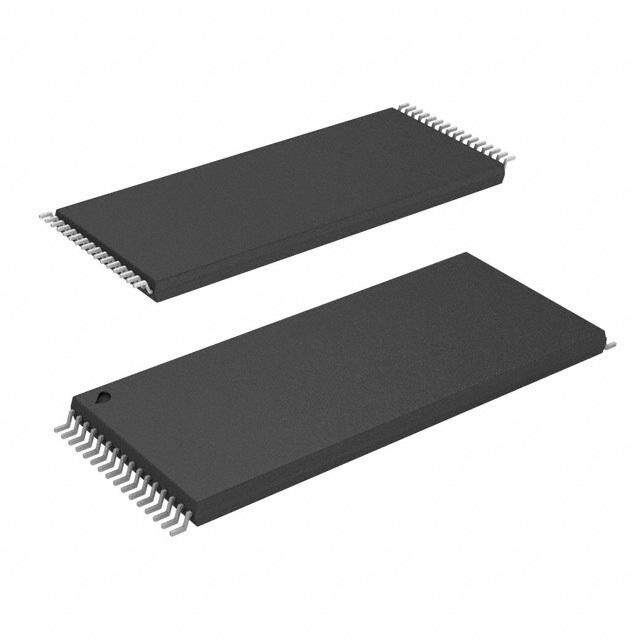
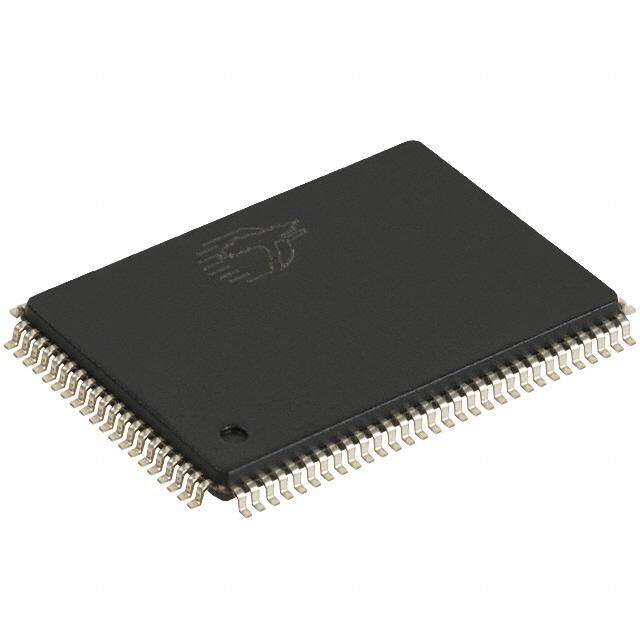
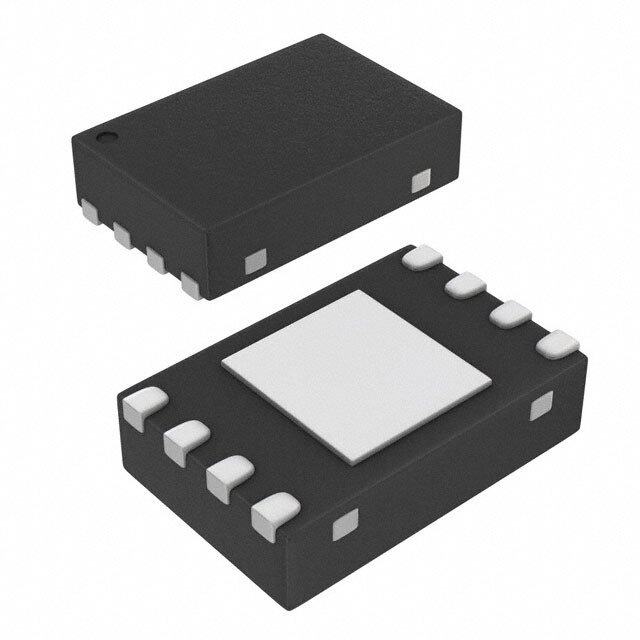
PDF Datasheet 数据手册内容提取
23LCV512 512 Kbit SPI Serial SRAM with Battery Backup and SDI Interface Device Selection Table Part Dual I/O Battery Max. Clock VCC Range Packages Number (SDI) Backup Frequency 23LCV512 2.5-5.5V Yes Yes 20 MHz SN, ST, P Features: Description: • SPI-Compatible Bus Interface: The Microchip Technology Inc. 23LCV512 is a 512 Kbit - 20 MHz Clock rate Serial SRAM device. The memory is accessed via a simple Serial Peripheral Interface (SPI) compatible - SPI/SDI mode serial bus. The bus signals required are a clock input • Low-Power CMOS Technology: (SCK) plus separate data in (SI) and data out (SO) - Read Current: 3 mA at 5.5V, 20 MHz lines. Access to the device is controlled through a Chip - Standby Current: 4 A at +85°C Select (CS) input. Additionally, SDI (Serial Dual Inter- • Unlimited Read and Write Cycles face) is supported if your application needs faster data • External Battery Backup support rates. • Zero Write Time This device also supports unlimited reads and writes to • 64K x 8-bit Organization: the memory array, and supports data backup via exter- nal battery/coin cell connected to VBAT (pin 7). - 32-byte page • Byte, Page and Sequential mode for Reads and The 23LCV512 is available in standard packages Writes including 8-lead SOIC, PDIP and advanced 8-lead TSSOP. • High Reliability • Temperature Range Supported: Package Types (not to scale) - Industrial (I): -40C to +85C • Pb-Free and RoHS Compliant, Halogen Free. • 8-Lead SOIC, TSSOP and PDIP Packages Pin Function Table SOIC/TSSOP/PDIP Name Function CS 1 8 Vcc CS Chip Select Input SO/SIO1 2 7 VBAT SO/SIO1 Serial Output/SDI pin NC 3 6 SCK Vss Ground Vss 4 5 SI/SIO0 SI/SIO0 Serial Input/SDI pin SCK Serial Clock VBAT External Backup Supply Input Vcc Power Supply Preliminary 2012 Microchip Technology Inc. DS25157A-page 1
23LCV512 1.0 ELECTRICAL CHARACTERISTICS Absolute Maximum Ratings (†) VCC.............................................................................................................................................................................6.5V All inputs and outputs w.r.t. VSS.........................................................................................................-0.3V to VCC +0.3V Storage temperature...............................................................................................................................-65°C to +150°C Ambient temperature under bias...............................................................................................................-40°C to +85°C † NOTICE: Stresses above those listed under “Absolute Maximum Ratings” may cause permanent damage to the device. This is a stress rating only and functional operation of the device at those or any other conditions above those indicated in the operational listings of this specification is not implied. Exposure to maximum rating conditions for an extended period of time may affect device reliability. TABLE 1-1: DC CHARACTERISTICS DC CHARACTERISTICS Industrial (I): TA = -40°C to +85°C Param. Sym. Characteristic Min. Typ.(1) Max. Units Test Conditions No. D001 VCC Supply voltage 2.5 — 5.5 V 23LCV512 D002 VIH High-level input .7 VCC — VCC +0.3 V voltage D003 VIL Low-level input -0.3 — 0.10xVCC V 23LCV512 voltage D004 VOL Low-level output — — 0.2 V IOL = 1mA voltage D005 VOH High-level output VCC -0.5 — — V IOH = -400A voltage D006 ILI Input leakage — — ±1 A CS = VCC, VIN = VSS OR VCC current D007 ILO Output leakage — — ±1 A CS = VCC, VOUT = VSS OR VCC current D008 ICC Read Operating current — 3 10 mA FCLK = 20MHz; SO = O, 5.5V D009 ICCS Standby current — 4 10 A CS = VCC = 5.5V, Inputs tied to VCC or VSS D010 CINT Input capacitance — — 7 pF VCC = 0V, f = 1 MHz, Ta = 25°C (Note1) D011 VDR RAM data retention — 1.0 — V (Note 2) voltage D012 VTRIP VBAT Change Over 1.6 1.8 2.0 V Typical at Ta = 25°C (Note1) D013 VBAT VBAT Voltage Range 1.4 — 3.6 V (Note1) D014 IBAT VBAT Current — 1 — A Typical at 2.5V, Ta = 25°C (Note1) Note 1: This parameter is periodically sampled and not 100% tested. Typical measurements taken at room temperature (25°C). 2: This is the limit to which VDD can be lowered without losing RAM data. This parameter is periodically sampled and not 100% tested. Preliminary DS25157A-page 2 2012 Microchip Technology Inc.
23LCV512 TABLE 1-2: AC CHARACTERISTICS AC CHARACTERISTICS Industrial (I): TA = -40°C to +85°C Param. Sym. Characteristic Min. Max. Units Test Conditions No. 1 FCLK Clock frequency — 20 MHz 2 TCSS CS setup time 25 — ns 3 TCSH CS hold time 50 — ns 4 TCSD CS disable time 25 — ns 5 Tsu Data setup time 10 — ns 6 THD Data hold time 10 — ns 7 TR CLK rise time — 20 ns Note1 8 TF CLK fall time — 20 ns Note1 9 THI Clock high time 25 — ns 10 TLO Clock low time 25 — ns 11 TCLD Clock delay time 25 — ns 12 TV Output valid from clock low — 25 ns 13 THO Output hold time 0 — ns Note1 14 TDIS Output disable time — 20 ns Note 1: This parameter is periodically sampled and not 100% tested. TABLE 1-3: AC TEST CONDITIONS AC Waveform: Input pulse level 0.1 VCC to 0.9 VCC Input rise/fall time 5 ns Operating temperature -40°C to +85°C CL = 30 pF — Timing Measurement Reference Level: Input 0.5 VCC Output 0.5 VCC Preliminary 2012 Microchip Technology Inc. DS25157A-page 3
23LCV512 FIGURE 1-1: SERIAL INPUT TIMING (SPI MODE) 4 CS 2 11 7 8 3 SCK 5 6 SI MSB in LSB in High-Impedance SO FIGURE 1-2: SERIAL OUTPUT TIMING (SPI MODE) CS 9 10 3 SCK 12 14 13 SO MSB out LSB out Don’t Care SI Preliminary DS25157A-page 4 2012 Microchip Technology Inc.
23LCV512 2.0 FUNCTIONAL DESCRIPTION If operating in Sequential mode, the data stored in the memory at the next address can be read sequentially by continuing to provide clock pulses. The internal 2.1 Principles of Operation Address Pointer is automatically incremented to the The 23LCV512 is an 512 Kbit Serial SRAM designed to next higher address after each byte of data is shifted interface directly with the Serial Peripheral Interface out. When the highest address is reached (FFFFh), (SPI) port of many of today’s popular microcontroller the address counter rolls over to address 0000h, families, including Microchip’s PIC® microcontrollers. It allowing the read cycle to be continued indefinitely. may also interface with microcontrollers that do not The read operation is terminated by raising the CS have a built-in SPI port by using discrete I/O lines pro- pin. grammed properly in firmware to match the SPI proto- col. In addition, the 23LCV512 is also capable of 2.4 Write Sequence operating in SDI (or dual SPI) mode. Prior to any attempt to write data to the 23LCV512, the The 23LCV512 contains an 8-bit instruction register. device must be selected by bringing CS low. The device is accessed via the SI pin, with data being clocked in on the rising edge of SCK. The CS pin must Once the device is selected, the Write command can be low for the entire operation. be started by issuing a WRITE instruction, followed by the 16-bit address, and then the data to be written. A Table2-1 contains a list of the possible instruction write is terminated by the CS being brought high. bytes and format for device operation. All instructions, addresses and data are transferred MSB first, LSB last. If operating in Page mode, after the initial data byte is shifted in, additional bytes can be shifted into the device. The Address Pointer is automatically 2.2 Modes of Operation incremented. This operation can continue for the entire The 23LCV512 has three modes of operation that are page (32 bytes) before data will start to be overwritten. selected by setting bits 7 and 6 in the MODE register. If operating in Sequential mode, after the initial data The modes of operation are Byte, Page and Burst. byte is shifted in, additional bytes can be clocked into Byte Operation – is selected when bits 7 and 6 in the the device. The internal Address Pointer is automati- MODE register are set to 00. In this mode, the read/ cally incremented. When the Address Pointer reaches write operations are limited to only one byte. The the highest address (FFFFh), the address counter rolls command followed by the 16-bit address is clocked into over to (0000h). This allows the operation to continue the device and the data to/from the device is transferred indefinitely, however, previous data will be overwritten. on the next eight clocks (Figure2-1, Figure2-2). Page Operation – is selected when bits 7 and 6 in the MODE register are set to 10. The 23LCV512 has 2048 pages of 32 bytes. In this mode, the read and write oper- ations are limited to within the addressed page (the address is automatically incremented internally). If the data being read or written reaches the page boundary, then the internal address counter will increment to the start of the page (Figure2-3, Figure2-4). Sequential Operation – is selected when bits 7 and 6 in the MODE register are set to 01. Sequential opera- tion allows the entire array to be written to and read from. The internal address counter is automatically incremented and page boundaries are ignored. When the internal address counter reaches the end of the array, the address counter will roll over to 0x0000 (Figure2-5, Figure2-6). 2.3 Read Sequence The device is selected by pulling CS low. The 8-bit READ instruction is transmitted to the 23LCV512 followed by the 16-bit address. After the correct READ instruction and address are sent, the data stored in the memory at the selected address is shifted out on the SO pin. Preliminary 2012 Microchip Technology Inc. DS25157A-page 5
23LCV512 TABLE 2-1: INSTRUCTION SET Hex Instruction Name Instruction Format Description Code READ 0000 0011 0x03 Read data from memory array beginning at selected address WRITE 0000 0010 0x02 Write data to memory array beginning at selected address EDIO 0011 1011 0x3B Enter Dual I/O access RSTIO 1111 1111 0xFF Reset Dual I/O access RDMR 0000 0101 0x05 Read Mode Register WRMR 0000 0001 0x01 Write Mode Register FIGURE 2-1: BYTE READ SEQUENCE (SPI MODE) CS 0 1 2 3 4 5 6 7 8 9 10 11 21 22 23 24 25 26 27 28 29 30 31 SCK Instruction 16-bit Address SI 0 0 0 0 0 0 1 1 15 14 13 12 2 1 0 Data Out High-Impedance SO 7 6 5 4 3 2 1 0 FIGURE 2-2: BYTE WRITE SEQUENCE (SPI MODE) CS 0 1 2 3 4 5 6 7 8 9 10 11 21 22 23 24 25 26 27 28 29 30 31 SCK Instruction 16-bit Address Data Byte SI 0 0 0 0 0 0 1 0 15 14 13 12 2 1 0 7 6 5 4 3 2 1 0 High-Impedance SO Preliminary DS25157A-page 6 2012 Microchip Technology Inc.
23LCV512 FIGURE 2-3: PAGE READ SEQUENCE (SPI MODE) CS 0 1 2 3 4 5 6 7 8 9 10 11 21 22 23 24 25 26 27 28 29 30 31 SCK Instruction 16-bit Address SI 0 0 0 0 0 0 1 1 15 14 13 12 2 1 0 Page X, Word Y Page X, Word Y High-Impedance SO 7 6 5 4 3 2 1 0 CS 32 33 34 35 36 37 38 39 SCK SI Page X, Word Y+1 Page X, Word 31 Page X, Word 0 SO 7 6 5 4 3 2 1 0 7 6 5 4 3 2 1 0 7 6 5 4 3 2 1 0 FIGURE 2-4: PAGE WRITE SEQUENCE (SPI MODE) CS 0 1 2 3 4 5 6 7 8 9 10 11 21 22 23 24 25 26 27 28 29 30 31 SCK Instruction 16-bit Address Page X, Word Y SI 0 0 0 0 0 0 1 0 15 14 13 12 2 1 0 7 6 5 4 3 2 1 0 Page X, Word Y CS 32 33 34 35 36 37 38 39 SCK Page X, Word Y+1 Page X, Word 31 Page X, Word 0 SI 7 6 5 4 3 2 1 0 7 6 5 4 3 2 1 0 7 6 5 4 3 2 1 0 Preliminary 2012 Microchip Technology Inc. DS25157A-page 7
23LCV512 FIGURE 2-5: SEQUENTIAL READ SEQUENCE (SPI MODE) CS 0 1 2 3 4 5 6 7 8 9 10 11 21 22 23 24 25 26 27 28 29 30 31 SCK Instruction 16-bit Address SI 0 0 0 0 0 0 1 1 15 14 13 12 2 1 0 Page X, Word Y SO 7 6 5 4 3 2 1 0 CS SCK SI Page X, Word 31 Page X+1, Word 0 Page X+1, Word 1 SO 7 6 5 4 3 2 1 0 7 6 5 4 3 2 1 0 7 6 5 4 3 2 1 0 CS SCK SI Page X+1, Word 31 Page X+n, Word 1 Page X+n, Word 31 SO 7 6 5 4 3 2 1 0 7 6 5 4 3 2 1 0 7 6 5 4 3 2 1 0 Preliminary DS25157A-page 8 2012 Microchip Technology Inc.
23LCV512 FIGURE 2-6: SEQUENTIAL WRITE SEQUENCE (SPI MODE) CS 0 1 2 3 4 5 6 7 8 9 10 11 21 22 23 24 25 26 27 28 29 30 31 SCK Instruction 16-bit Address Data Byte 1 SI 0 0 0 0 0 0 1 0 15 14 13 12 2 1 0 7 6 5 4 3 2 1 0 CS 32 33 34 35 36 37 38 39 40 41 42 43 44 45 46 47 SCK Data Byte 2 Data Byte 3 Data Byte n SI 7 6 5 4 3 2 1 0 7 6 5 4 3 2 1 0 7 6 5 4 3 2 1 0 Preliminary 2012 Microchip Technology Inc. DS25157A-page 9
23LCV512 2.5 Read Mode Register Instruction The mode bits indicate the operating mode of the (RDMR) SRAM. The possible modes of operation are: 0 0 = Byte mode The Read Mode Register instruction (RDMR) provides access to the MODE register. The MODE register may 1 0 = Page mode be read at any time. The MODE register is formatted as 0 1 = Sequential mode (default operation) follows: 1 1 = Reserved TABLE 2-2: MODE REGISTER Bits 0 through 5 are reserved and should always be set to ‘0’. 7 6 5 4 3 2 1 0 See Figure2-7 for the RDMR timing sequence. W/R W/R – – – – – – MODE MODE 0 0 0 0 0 0 W/R = writable/readable FIGURE 2-7: READ MODE REGISTER TIMING SEQUENCE (RDMR) CS 0 1 2 3 4 5 6 7 8 9 10 11 12 13 14 15 SCK Instruction SI 0 0 0 0 0 1 0 1 Data from MODE Register High-Impedance SO 7 6 5 4 3 2 1 0 Preliminary DS25157A-page 10 2012 Microchip Technology Inc.
23LCV512 2.6 Write Mode Register Instruction (WRMR) The Write Mode Register instruction (WRMR) allows the user to write to the bits in the MODE register as shown in Table2-2. This allows for setting of the Device Operating mode. Several of the bits in the MODE register must be cleared to ‘0’. See Figure2-8 for the WRMR timing sequence. FIGURE 2-8: WRITE MODE REGISTER TIMING SEQUENCE (WRMR) CS 0 1 2 3 4 5 6 7 8 9 10 11 12 13 14 15 SCK Instruction Data to MODE Register SI 0 0 0 0 0 0 0 1 7 6 5 4 3 2 1 0 High-Impedance SO 2.7 Power-On State The 23LCV512 powers on in the following state: • The device is in low-power Standby mode (CS=1) • A high-to-low-level transition on CS is required to enter active state Preliminary 2012 Microchip Technology Inc. DS25157A-page 11
23LCV512 3.0 PIN DESCRIPTIONS 3.6 VBAT supply Input The descriptions of the pins are listed in Table3-1. The VBAT pin is used as an input for external backup supply to maintain SRAM data when VCC is below the TABLE 3-1: PIN FUNCTION TABLE VTRIP point. If the VBAT function is not being used, it is recommended to connect this pin to VSS. SOIC/ Name PDIP Function 3.7 SPI and SDI Pin Designations TSSOP CS 1 Chip Select Input SPI Mode: SO/SIO1 2 Serial Data Output/SDI Pin CS 1 8 Vcc NC 3 No Connect VSS 4 Ground SO 2 7 VBAT SI/SIO0 5 Serial Data Input/SDI Pin NC 3 6 SCK SCK 6 Serial Clock Input Vss 4 5 SI VBAT 7 External Backup Supply VCC 8 Power Supply SDI Mode: 3.1 Chip Select (CS) CS 1 8 Vcc A low level on this pin selects the device. A high level SIO1 2 7 VBAT deselects the device and forces it into Standby mode. When the device is deselected, SO goes to the high- NC 3 6 SCK impedance state, allowing multiple parts to share the Vss 4 5 SIO0 same SPI bus. After power-up, a low level on CS is required, prior to any sequence being initiated. 3.2 Serial Output (SO) The SO pin is used to transfer data out of the 23LCV512. During a read cycle, data is shifted out on this pin after the falling edge of the serial clock. 3.3 Serial Input (SI) The SI pin is used to transfer data into the device. It receives instructions, addresses, and data. Data is latched on the rising edge of the serial clock. 3.4 Serial Dual Interface Pins(SIO0, SIO1) The SIO0 and SIO1 pins are used for SDI mode of operation. Functionality of these I/O pins is shared with SO and SI. 3.5 Serial Clock (SCK) The SCK is used to synchronize the communication between a master and the 23LCV512. Instructions, addresses or data present on the SI pin are latched on the rising edge of the clock input, while data on the SO pin is updated after the falling edge of the clock input. Preliminary DS25157A-page 12 2012 Microchip Technology Inc.
23LCV512 4.0 DUAL SERIAL MODE 4.1 Dual Interface Mode The 23LCV512 also supports SDI (Serial Dual) mode The 23LCV512 supports SDI (Serial Dual) mode of of operation when used with compatible master operation. To enter SDI mode the EDIO command must devices. As a convention for SDI mode of operation, be clocked in (Figure4-1). It should be noted that if the two bits are entered per clock using the SIO0 and SIO1 MCU resets before the SRAM, the user will need to pins. Bits are clocked MSB first. determine the serial mode of operation of the SRAM and reset it accordingly. Byte read and write sequence in SDI mode is shown in Figure4-2 and Figure4-3. FIGURE 4-1: ENTER SDI MODE (EDIO) FROM SPI MODE CS 0 1 2 3 4 5 6 7 SCK SI 0 0 1 1 1 0 1 1 High-Impedance SO FIGURE 4-2: BYTE READ MODE SDI CS 0 1 2 3 4 5 6 7 8 9 10 11 12 13 14 15 16 17 18 19 SCK SIO0 0 0 0 1 14 12 10 8 6 4 2 0 6 4 2 0 Instruction 16-Bit Address Dummy Byte Data Out 0 0 0 1 15 13 11 9 7 5 3 1 7 5 3 1 SIO1 Note: Page and Sequential mode are similar in that additional bytes can be clocked out before CS is brought high. Note: The first byte read after the address will be a dummy byte. Preliminary 2012 Microchip Technology Inc. DS25157A-page 13
23LCV512 FIGURE 4-3: BYTE WRITE MODE SDI CS 0 1 2 3 4 5 6 7 8 9 10 11 12 13 14 15 SCK SIO0 0 0 0 0 14 12 10 8 6 4 2 0 6 4 2 0 Instruction 16-Bit Address Data In 0 0 0 1 15 13 11 9 7 5 3 1 7 5 3 1 SIO1 Note: Page and Sequential mode are similar in that additional bytes can be clocked in before CS is brought high. 4.2 Exit SDI Mode To exit from SDI mode, the RSTIO command must be issued. The command must be entered in the current device configuration see (Figure4-4). FIGURE 4-4: RESET SDI MODE (RSTIO) – FROM SDI MODE CS 0 1 2 3 SCK SIO0 1 1 1 1 SIO1 1 1 1 1 Preliminary DS25157A-page 14 2012 Microchip Technology Inc.
23LCV512 5.0 VBAT The VBAT trip point is the point at which the internal switch operates the device from the VBAT supply and is The 23LCV512 features an internal switch that will typically 1.8V (VTRIP specification D012). When VCC maintain the SRAM contents. In the event that the VCC falls below the VTRIP point the system will continue to supply is not available, the voltage applied to the VBAT maintain the SRAM contents. pin serves as the backup supply. The following conditions apply: Supply Condition Read/Write Access Powered By VCC < VTRIP, VCC < VBAT No VBAT VCC > VTRIP, VCC < VBAT Yes VCC VCC > VTRIP, VCC > VBAT Yes VCC Preliminary 2012 Microchip Technology Inc. DS25157A-page 15
23LCV512 6.0 PACKAGING INFORMATION 6.1 Package Marking Information 8-Lead PDIP (300 mil) Example XXXXXXXX 23LCV512 XXXXXNNN I/P e 3 1L7 YYWW 0528 8-Lead SOIC (3.90 mm) Example: XXXXXXXT 23LCVAI XXXXYYWW SN e 3 0528 NNN 1L7 8-Lead TSSOP Example: XXXX 3LVA TYWW I837 NNN 1L7 Legend: XX...X Part number or part number code T Temperature (I, E) Y Year code (last digit of calendar year) YY Year code (last 2 digits of calendar year) WW Week code (week of January 1 is week ‘01’) NNN Alphanumeric traceability code (2 characters for small packages) e3 Pb-free JEDEC designator for Matte Tin (Sn) Note: For very small packages with no room for the Pb-free JEDEC designator e3 , the marking will only appear on the outer carton or reel label. Note: In the event the full Microchip part number cannot be marked on one line, it will be carried over to the next line, thus limiting the number of available characters for customer-specific information. Preliminary DS25157A-page 16 2012 Microchip Technology Inc.
23LCV512 (cid:2)(cid:3)(cid:4)(cid:5)(cid:6)(cid:7)(cid:8)(cid:9)(cid:10)(cid:6)(cid:11)(cid:12)(cid:13)(cid:14)(cid:8)(cid:15)(cid:16)(cid:6)(cid:10)(cid:8)(cid:17)(cid:18)(cid:3)(cid:4)(cid:13)(cid:18)(cid:5)(cid:8)(cid:19)(cid:9)(cid:20)(cid:8)(cid:21)(cid:8)(cid:22)(cid:23)(cid:23)(cid:8)(cid:24)(cid:13)(cid:10)(cid:8)(cid:25)(cid:26)(cid:7)(cid:27)(cid:8)(cid:28)(cid:9)(cid:15)(cid:17)(cid:9)(cid:29) (cid:30)(cid:26)(cid:12)(cid:5)(cid:31) 3(cid:10)(cid:9)(cid:2)&(cid:11)(cid:14)(cid:2)’(cid:10)!&(cid:2)(cid:8)"(cid:9)(cid:9)(cid:14)(cid:15)&(cid:2)(cid:12)(cid:28)(cid:8)4(cid:28)(cid:17)(cid:14)(cid:2)#(cid:9)(cid:28)*(cid:7)(cid:15)(cid:17)!((cid:2)(cid:12)(cid:16)(cid:14)(cid:28)!(cid:14)(cid:2)!(cid:14)(cid:14)(cid:2)&(cid:11)(cid:14)(cid:2)(cid:6)(cid:7)(cid:8)(cid:9)(cid:10)(cid:8)(cid:11)(cid:7)(cid:12)(cid:2)(cid:31)(cid:28)(cid:8)4(cid:28)(cid:17)(cid:7)(cid:15)(cid:17)(cid:2)(cid:22)(cid:12)(cid:14)(cid:8)(cid:7)%(cid:7)(cid:8)(cid:28)&(cid:7)(cid:10)(cid:15)(cid:2)(cid:16)(cid:10)(cid:8)(cid:28)&(cid:14)#(cid:2)(cid:28)&(cid:2) (cid:11)&&(cid:12)255***(cid:20)’(cid:7)(cid:8)(cid:9)(cid:10)(cid:8)(cid:11)(cid:7)(cid:12)(cid:20)(cid:8)(cid:10)’5(cid:12)(cid:28)(cid:8)4(cid:28)(cid:17)(cid:7)(cid:15)(cid:17) N NOTE1 E1 1 2 3 D E A A2 L A1 c e eB b1 b 6(cid:15)(cid:7)&! (cid:19)7,8.(cid:22) (cid:21)(cid:7)’(cid:14)(cid:15)!(cid:7)(cid:10)(cid:15)(cid:2)9(cid:7)’(cid:7)&! (cid:6)(cid:19)7 7:(cid:6) (cid:6)(cid:25); 7"’)(cid:14)(cid:9)(cid:2)(cid:10)%(cid:2)(cid:31)(cid:7)(cid:15)! 7 < (cid:31)(cid:7)&(cid:8)(cid:11) (cid:14) (cid:20)(cid:30)(cid:4)(cid:4)(cid:2)1(cid:22), (cid:13)(cid:10)(cid:12)(cid:2)&(cid:10)(cid:2)(cid:22)(cid:14)(cid:28)&(cid:7)(cid:15)(cid:17)(cid:2)(cid:31)(cid:16)(cid:28)(cid:15)(cid:14) (cid:25) = = (cid:20)(cid:3)(cid:30)(cid:4) (cid:6)(cid:10)(cid:16)#(cid:14)#(cid:2)(cid:31)(cid:28)(cid:8)4(cid:28)(cid:17)(cid:14)(cid:2)(cid:13)(cid:11)(cid:7)(cid:8)4(cid:15)(cid:14)!! (cid:25)(cid:3) (cid:20)(cid:30)(cid:30)(cid:29) (cid:20)(cid:30)-(cid:4) (cid:20)(cid:30)(cid:24)(cid:29) 1(cid:28)!(cid:14)(cid:2)&(cid:10)(cid:2)(cid:22)(cid:14)(cid:28)&(cid:7)(cid:15)(cid:17)(cid:2)(cid:31)(cid:16)(cid:28)(cid:15)(cid:14) (cid:25)(cid:30) (cid:20)(cid:4)(cid:30)(cid:29) = = (cid:22)(cid:11)(cid:10)"(cid:16)#(cid:14)(cid:9)(cid:2)&(cid:10)(cid:2)(cid:22)(cid:11)(cid:10)"(cid:16)#(cid:14)(cid:9)(cid:2)>(cid:7)#&(cid:11) . (cid:20)(cid:3)(cid:24)(cid:4) (cid:20)-(cid:30)(cid:4) (cid:20)-(cid:3)(cid:29) (cid:6)(cid:10)(cid:16)#(cid:14)#(cid:2)(cid:31)(cid:28)(cid:8)4(cid:28)(cid:17)(cid:14)(cid:2)>(cid:7)#&(cid:11) .(cid:30) (cid:20)(cid:3)(cid:23)(cid:4) (cid:20)(cid:3)(cid:29)(cid:4) (cid:20)(cid:3)<(cid:4) : (cid:14)(cid:9)(cid:28)(cid:16)(cid:16)(cid:2)9(cid:14)(cid:15)(cid:17)&(cid:11) (cid:21) (cid:20)-(cid:23)< (cid:20)-?(cid:29) (cid:20)(cid:23)(cid:4)(cid:4) (cid:13)(cid:7)(cid:12)(cid:2)&(cid:10)(cid:2)(cid:22)(cid:14)(cid:28)&(cid:7)(cid:15)(cid:17)(cid:2)(cid:31)(cid:16)(cid:28)(cid:15)(cid:14) 9 (cid:20)(cid:30)(cid:30)(cid:29) (cid:20)(cid:30)-(cid:4) (cid:20)(cid:30)(cid:29)(cid:4) 9(cid:14)(cid:28)#(cid:2)(cid:13)(cid:11)(cid:7)(cid:8)4(cid:15)(cid:14)!! (cid:8) (cid:20)(cid:4)(cid:4)< (cid:20)(cid:4)(cid:30)(cid:4) (cid:20)(cid:4)(cid:30)(cid:29) 6(cid:12)(cid:12)(cid:14)(cid:9)(cid:2)9(cid:14)(cid:28)#(cid:2)>(cid:7)#&(cid:11) )(cid:30) (cid:20)(cid:4)(cid:23)(cid:4) (cid:20)(cid:4)?(cid:4) (cid:20)(cid:4)(cid:5)(cid:4) 9(cid:10)*(cid:14)(cid:9)(cid:2)9(cid:14)(cid:28)#(cid:2)>(cid:7)#&(cid:11) ) (cid:20)(cid:4)(cid:30)(cid:23) (cid:20)(cid:4)(cid:30)< (cid:20)(cid:4)(cid:3)(cid:3) : (cid:14)(cid:9)(cid:28)(cid:16)(cid:16)(cid:2)(cid:26)(cid:10)*(cid:2)(cid:22)(cid:12)(cid:28)(cid:8)(cid:7)(cid:15)(cid:17)(cid:2)(cid:2)+ (cid:14)1 = = (cid:20)(cid:23)-(cid:4) (cid:30)(cid:26)(cid:12)(cid:5)(cid:11)(cid:31) (cid:30)(cid:20) (cid:31)(cid:7)(cid:15)(cid:2)(cid:30)(cid:2) (cid:7)!"(cid:28)(cid:16)(cid:2)(cid:7)(cid:15)#(cid:14)$(cid:2)%(cid:14)(cid:28)&"(cid:9)(cid:14)(cid:2)’(cid:28)(cid:18)(cid:2) (cid:28)(cid:9)(cid:18)((cid:2))"&(cid:2)’"!&(cid:2))(cid:14)(cid:2)(cid:16)(cid:10)(cid:8)(cid:28)&(cid:14)#(cid:2)*(cid:7)&(cid:11)(cid:2)&(cid:11)(cid:14)(cid:2)(cid:11)(cid:28)&(cid:8)(cid:11)(cid:14)#(cid:2)(cid:28)(cid:9)(cid:14)(cid:28)(cid:20) (cid:3)(cid:20) +(cid:2)(cid:22)(cid:7)(cid:17)(cid:15)(cid:7)%(cid:7)(cid:8)(cid:28)(cid:15)&(cid:2),(cid:11)(cid:28)(cid:9)(cid:28)(cid:8)&(cid:14)(cid:9)(cid:7)!&(cid:7)(cid:8)(cid:20) -(cid:20) (cid:21)(cid:7)’(cid:14)(cid:15)!(cid:7)(cid:10)(cid:15)!(cid:2)(cid:21)(cid:2)(cid:28)(cid:15)#(cid:2).(cid:30)(cid:2)#(cid:10)(cid:2)(cid:15)(cid:10)&(cid:2)(cid:7)(cid:15)(cid:8)(cid:16)"#(cid:14)(cid:2)’(cid:10)(cid:16)#(cid:2)%(cid:16)(cid:28)!(cid:11)(cid:2)(cid:10)(cid:9)(cid:2)(cid:12)(cid:9)(cid:10)&(cid:9)"!(cid:7)(cid:10)(cid:15)!(cid:20)(cid:2)(cid:6)(cid:10)(cid:16)#(cid:2)%(cid:16)(cid:28)!(cid:11)(cid:2)(cid:10)(cid:9)(cid:2)(cid:12)(cid:9)(cid:10)&(cid:9)"!(cid:7)(cid:10)(cid:15)!(cid:2)!(cid:11)(cid:28)(cid:16)(cid:16)(cid:2)(cid:15)(cid:10)&(cid:2)(cid:14)$(cid:8)(cid:14)(cid:14)#(cid:2)(cid:20)(cid:4)(cid:30)(cid:4)/(cid:2)(cid:12)(cid:14)(cid:9)(cid:2)!(cid:7)#(cid:14)(cid:20) (cid:23)(cid:20) (cid:21)(cid:7)’(cid:14)(cid:15)!(cid:7)(cid:10)(cid:15)(cid:7)(cid:15)(cid:17)(cid:2)(cid:28)(cid:15)#(cid:2)&(cid:10)(cid:16)(cid:14)(cid:9)(cid:28)(cid:15)(cid:8)(cid:7)(cid:15)(cid:17)(cid:2)(cid:12)(cid:14)(cid:9)(cid:2)(cid:25)(cid:22)(cid:6).(cid:2)0(cid:30)(cid:23)(cid:20)(cid:29)(cid:6)(cid:20) 1(cid:22),2(cid:2)1(cid:28)!(cid:7)(cid:8)(cid:2)(cid:21)(cid:7)’(cid:14)(cid:15)!(cid:7)(cid:10)(cid:15)(cid:20)(cid:2)(cid:13)(cid:11)(cid:14)(cid:10)(cid:9)(cid:14)&(cid:7)(cid:8)(cid:28)(cid:16)(cid:16)(cid:18)(cid:2)(cid:14)$(cid:28)(cid:8)&(cid:2) (cid:28)(cid:16)"(cid:14)(cid:2)!(cid:11)(cid:10)*(cid:15)(cid:2)*(cid:7)&(cid:11)(cid:10)"&(cid:2)&(cid:10)(cid:16)(cid:14)(cid:9)(cid:28)(cid:15)(cid:8)(cid:14)!(cid:20) (cid:6)(cid:7)(cid:8)(cid:9)(cid:10)(cid:8)(cid:11)(cid:7)(cid:12)(cid:13)(cid:14)(cid:8)(cid:11)(cid:15)(cid:10)(cid:16)(cid:10)(cid:17)(cid:18)(cid:21)(cid:9)(cid:28)*(cid:7)(cid:15)(cid:17),(cid:4)(cid:23)(cid:27)(cid:4)(cid:30)<1 Preliminary 2012 Microchip Technology Inc. DS25157A-page 17
23LCV512 Note: For the most current package drawings, please see the Microchip Packaging Specification located at http://www.microchip.com/packaging Preliminary DS25157A-page 18 2012 Microchip Technology Inc.
23LCV512 Note: For the most current package drawings, please see the Microchip Packaging Specification located at http://www.microchip.com/packaging Preliminary 2012 Microchip Technology Inc. DS25157A-page 19
23LCV512 (cid:2)(cid:3)(cid:4)(cid:5)(cid:6)(cid:7)(cid:8)(cid:9)(cid:10)(cid:6)(cid:11)(cid:12)(cid:13)(cid:14)(cid:8) (cid:24)(cid:6)(cid:10)(cid:10)(cid:8)!(cid:16)(cid:12)(cid:10)(cid:13)(cid:18)(cid:5)(cid:8)(cid:19) (cid:30)(cid:20)(cid:8)(cid:21)(cid:8)(cid:30)(cid:6)""(cid:26)#$(cid:8)(cid:22)%&(cid:23)(cid:8)(cid:24)(cid:24)(cid:8)(cid:25)(cid:26)(cid:7)(cid:27)(cid:8)(cid:28) !(cid:17)’(cid:29) (cid:30)(cid:26)(cid:12)(cid:5)(cid:31) 3(cid:10)(cid:9)(cid:2)&(cid:11)(cid:14)(cid:2)’(cid:10)!&(cid:2)(cid:8)"(cid:9)(cid:9)(cid:14)(cid:15)&(cid:2)(cid:12)(cid:28)(cid:8)4(cid:28)(cid:17)(cid:14)(cid:2)#(cid:9)(cid:28)*(cid:7)(cid:15)(cid:17)!((cid:2)(cid:12)(cid:16)(cid:14)(cid:28)!(cid:14)(cid:2)!(cid:14)(cid:14)(cid:2)&(cid:11)(cid:14)(cid:2)(cid:6)(cid:7)(cid:8)(cid:9)(cid:10)(cid:8)(cid:11)(cid:7)(cid:12)(cid:2)(cid:31)(cid:28)(cid:8)4(cid:28)(cid:17)(cid:7)(cid:15)(cid:17)(cid:2)(cid:22)(cid:12)(cid:14)(cid:8)(cid:7)%(cid:7)(cid:8)(cid:28)&(cid:7)(cid:10)(cid:15)(cid:2)(cid:16)(cid:10)(cid:8)(cid:28)&(cid:14)#(cid:2)(cid:28)&(cid:2) (cid:11)&&(cid:12)255***(cid:20)’(cid:7)(cid:8)(cid:9)(cid:10)(cid:8)(cid:11)(cid:7)(cid:12)(cid:20)(cid:8)(cid:10)’5(cid:12)(cid:28)(cid:8)4(cid:28)(cid:17)(cid:7)(cid:15)(cid:17) Preliminary DS25157A-page 20 2012 Microchip Technology Inc.
23LCV512 (cid:2)(cid:3)(cid:4)(cid:5)(cid:6)(cid:7)(cid:8)(cid:9)(cid:10)(cid:6)(cid:11)(cid:12)(cid:13)(cid:14)(cid:8)()(cid:13)(cid:18)(cid:8) )"(cid:13)(cid:18)*(cid:8) (cid:24)(cid:6)(cid:10)(cid:10)(cid:8)!(cid:16)(cid:12)(cid:10)(cid:13)(cid:18)(cid:5)(cid:8)(cid:19) ((cid:20)(cid:8)(cid:21)(cid:8)+%+(cid:8)(cid:24)(cid:24)(cid:8)(cid:25)(cid:26)(cid:7)(cid:27)(cid:8)(cid:28)( !(cid:9)(cid:29) (cid:30)(cid:26)(cid:12)(cid:5)(cid:31) 3(cid:10)(cid:9)(cid:2)&(cid:11)(cid:14)(cid:2)’(cid:10)!&(cid:2)(cid:8)"(cid:9)(cid:9)(cid:14)(cid:15)&(cid:2)(cid:12)(cid:28)(cid:8)4(cid:28)(cid:17)(cid:14)(cid:2)#(cid:9)(cid:28)*(cid:7)(cid:15)(cid:17)!((cid:2)(cid:12)(cid:16)(cid:14)(cid:28)!(cid:14)(cid:2)!(cid:14)(cid:14)(cid:2)&(cid:11)(cid:14)(cid:2)(cid:6)(cid:7)(cid:8)(cid:9)(cid:10)(cid:8)(cid:11)(cid:7)(cid:12)(cid:2)(cid:31)(cid:28)(cid:8)4(cid:28)(cid:17)(cid:7)(cid:15)(cid:17)(cid:2)(cid:22)(cid:12)(cid:14)(cid:8)(cid:7)%(cid:7)(cid:8)(cid:28)&(cid:7)(cid:10)(cid:15)(cid:2)(cid:16)(cid:10)(cid:8)(cid:28)&(cid:14)#(cid:2)(cid:28)&(cid:2) (cid:11)&&(cid:12)255***(cid:20)’(cid:7)(cid:8)(cid:9)(cid:10)(cid:8)(cid:11)(cid:7)(cid:12)(cid:20)(cid:8)(cid:10)’5(cid:12)(cid:28)(cid:8)4(cid:28)(cid:17)(cid:7)(cid:15)(cid:17) D N E E1 NOTE1 1 2 b e c φ A A2 A1 L1 L 6(cid:15)(cid:7)&! (cid:6)(cid:19)99(cid:19)(cid:6).(cid:13).(cid:26)(cid:22) (cid:21)(cid:7)’(cid:14)(cid:15)!(cid:7)(cid:10)(cid:15)(cid:2)9(cid:7)’(cid:7)&! (cid:6)(cid:19)7 7:(cid:6) (cid:6)(cid:25); 7"’)(cid:14)(cid:9)(cid:2)(cid:10)%(cid:2)(cid:31)(cid:7)(cid:15)! 7 < (cid:31)(cid:7)&(cid:8)(cid:11) (cid:14) (cid:4)(cid:20)?(cid:29)(cid:2)1(cid:22), : (cid:14)(cid:9)(cid:28)(cid:16)(cid:16)(cid:2)8(cid:14)(cid:7)(cid:17)(cid:11)& (cid:25) = = (cid:30)(cid:20)(cid:3)(cid:4) (cid:6)(cid:10)(cid:16)#(cid:14)#(cid:2)(cid:31)(cid:28)(cid:8)4(cid:28)(cid:17)(cid:14)(cid:2)(cid:13)(cid:11)(cid:7)(cid:8)4(cid:15)(cid:14)!! (cid:25)(cid:3) (cid:4)(cid:20)<(cid:4) (cid:30)(cid:20)(cid:4)(cid:4) (cid:30)(cid:20)(cid:4)(cid:29) (cid:22)&(cid:28)(cid:15)#(cid:10)%%(cid:2) (cid:25)(cid:30) (cid:4)(cid:20)(cid:4)(cid:29) = (cid:4)(cid:20)(cid:30)(cid:29) : (cid:14)(cid:9)(cid:28)(cid:16)(cid:16)(cid:2)>(cid:7)#&(cid:11) . ?(cid:20)(cid:23)(cid:4)(cid:2)1(cid:22), (cid:6)(cid:10)(cid:16)#(cid:14)#(cid:2)(cid:31)(cid:28)(cid:8)4(cid:28)(cid:17)(cid:14)(cid:2)>(cid:7)#&(cid:11) .(cid:30) (cid:23)(cid:20)-(cid:4) (cid:23)(cid:20)(cid:23)(cid:4) (cid:23)(cid:20)(cid:29)(cid:4) (cid:6)(cid:10)(cid:16)#(cid:14)#(cid:2)(cid:31)(cid:28)(cid:8)4(cid:28)(cid:17)(cid:14)(cid:2)9(cid:14)(cid:15)(cid:17)&(cid:11) (cid:21) (cid:3)(cid:20)(cid:24)(cid:4) -(cid:20)(cid:4)(cid:4) -(cid:20)(cid:30)(cid:4) 3(cid:10)(cid:10)&(cid:2)9(cid:14)(cid:15)(cid:17)&(cid:11) 9 (cid:4)(cid:20)(cid:23)(cid:29) (cid:4)(cid:20)?(cid:4) (cid:4)(cid:20)(cid:5)(cid:29) 3(cid:10)(cid:10)&(cid:12)(cid:9)(cid:7)(cid:15)& 9(cid:30) (cid:30)(cid:20)(cid:4)(cid:4)(cid:2)(cid:26).3 3(cid:10)(cid:10)&(cid:2)(cid:25)(cid:15)(cid:17)(cid:16)(cid:14) (cid:3) (cid:4)R = <R 9(cid:14)(cid:28)#(cid:2)(cid:13)(cid:11)(cid:7)(cid:8)4(cid:15)(cid:14)!! (cid:8) (cid:4)(cid:20)(cid:4)(cid:24) = (cid:4)(cid:20)(cid:3)(cid:4) 9(cid:14)(cid:28)#(cid:2)>(cid:7)#&(cid:11) ) (cid:4)(cid:20)(cid:30)(cid:24) = (cid:4)(cid:20)-(cid:4) (cid:30)(cid:26)(cid:12)(cid:5)(cid:11)(cid:31) (cid:30)(cid:20) (cid:31)(cid:7)(cid:15)(cid:2)(cid:30)(cid:2) (cid:7)!"(cid:28)(cid:16)(cid:2)(cid:7)(cid:15)#(cid:14)$(cid:2)%(cid:14)(cid:28)&"(cid:9)(cid:14)(cid:2)’(cid:28)(cid:18)(cid:2) (cid:28)(cid:9)(cid:18)((cid:2))"&(cid:2)’"!&(cid:2))(cid:14)(cid:2)(cid:16)(cid:10)(cid:8)(cid:28)&(cid:14)#(cid:2)*(cid:7)&(cid:11)(cid:7)(cid:15)(cid:2)&(cid:11)(cid:14)(cid:2)(cid:11)(cid:28)&(cid:8)(cid:11)(cid:14)#(cid:2)(cid:28)(cid:9)(cid:14)(cid:28)(cid:20) (cid:3)(cid:20) (cid:21)(cid:7)’(cid:14)(cid:15)!(cid:7)(cid:10)(cid:15)!(cid:2)(cid:21)(cid:2)(cid:28)(cid:15)#(cid:2).(cid:30)(cid:2)#(cid:10)(cid:2)(cid:15)(cid:10)&(cid:2)(cid:7)(cid:15)(cid:8)(cid:16)"#(cid:14)(cid:2)’(cid:10)(cid:16)#(cid:2)%(cid:16)(cid:28)!(cid:11)(cid:2)(cid:10)(cid:9)(cid:2)(cid:12)(cid:9)(cid:10)&(cid:9)"!(cid:7)(cid:10)(cid:15)!(cid:20)(cid:2)(cid:6)(cid:10)(cid:16)#(cid:2)%(cid:16)(cid:28)!(cid:11)(cid:2)(cid:10)(cid:9)(cid:2)(cid:12)(cid:9)(cid:10)&(cid:9)"!(cid:7)(cid:10)(cid:15)!(cid:2)!(cid:11)(cid:28)(cid:16)(cid:16)(cid:2)(cid:15)(cid:10)&(cid:2)(cid:14)$(cid:8)(cid:14)(cid:14)#(cid:2)(cid:4)(cid:20)(cid:30)(cid:29)(cid:2)’’(cid:2)(cid:12)(cid:14)(cid:9)(cid:2)!(cid:7)#(cid:14)(cid:20) -(cid:20) (cid:21)(cid:7)’(cid:14)(cid:15)!(cid:7)(cid:10)(cid:15)(cid:7)(cid:15)(cid:17)(cid:2)(cid:28)(cid:15)#(cid:2)&(cid:10)(cid:16)(cid:14)(cid:9)(cid:28)(cid:15)(cid:8)(cid:7)(cid:15)(cid:17)(cid:2)(cid:12)(cid:14)(cid:9)(cid:2)(cid:25)(cid:22)(cid:6).(cid:2)0(cid:30)(cid:23)(cid:20)(cid:29)(cid:6)(cid:20) 1(cid:22),2 1(cid:28)!(cid:7)(cid:8)(cid:2)(cid:21)(cid:7)’(cid:14)(cid:15)!(cid:7)(cid:10)(cid:15)(cid:20)(cid:2)(cid:13)(cid:11)(cid:14)(cid:10)(cid:9)(cid:14)&(cid:7)(cid:8)(cid:28)(cid:16)(cid:16)(cid:18)(cid:2)(cid:14)$(cid:28)(cid:8)&(cid:2) (cid:28)(cid:16)"(cid:14)(cid:2)!(cid:11)(cid:10)*(cid:15)(cid:2)*(cid:7)&(cid:11)(cid:10)"&(cid:2)&(cid:10)(cid:16)(cid:14)(cid:9)(cid:28)(cid:15)(cid:8)(cid:14)!(cid:20) (cid:26).32 (cid:26)(cid:14)%(cid:14)(cid:9)(cid:14)(cid:15)(cid:8)(cid:14)(cid:2)(cid:21)(cid:7)’(cid:14)(cid:15)!(cid:7)(cid:10)(cid:15)((cid:2)"!"(cid:28)(cid:16)(cid:16)(cid:18)(cid:2)*(cid:7)&(cid:11)(cid:10)"&(cid:2)&(cid:10)(cid:16)(cid:14)(cid:9)(cid:28)(cid:15)(cid:8)(cid:14)((cid:2)%(cid:10)(cid:9)(cid:2)(cid:7)(cid:15)%(cid:10)(cid:9)’(cid:28)&(cid:7)(cid:10)(cid:15)(cid:2)(cid:12)"(cid:9)(cid:12)(cid:10)!(cid:14)!(cid:2)(cid:10)(cid:15)(cid:16)(cid:18)(cid:20) (cid:6)(cid:7)(cid:8)(cid:9)(cid:10)(cid:8)(cid:11)(cid:7)(cid:12)(cid:13)(cid:14)(cid:8)(cid:11)(cid:15)(cid:10)(cid:16)(cid:10)(cid:17)(cid:18)(cid:21)(cid:9)(cid:28)*(cid:7)(cid:15)(cid:17),(cid:4)(cid:23)(cid:27)(cid:4)<?1 Preliminary 2012 Microchip Technology Inc. DS25157A-page 21
23LCV512 Note: For the most current package drawings, please see the Microchip Packaging Specification located at http://www.microchip.com/packaging Preliminary DS25157A-page 22 2012 Microchip Technology Inc.
23LCV512 APPENDIX A: REVISION HISTORY Revision A (09/2012) Initial release. Preliminary 2012 Microchip Technology Inc. DS25157A-page 23
23LCV512 NOTES: Preliminary DS25157A-page 24 2012 Microchip Technology Inc.
23LCV512 THE MICROCHIP WEB SITE CUSTOMER SUPPORT Microchip provides online support via our WWW site at Users of Microchip products can receive assistance www.microchip.com. This web site is used as a means through several channels: to make files and information easily available to • Distributor or Representative customers. Accessible by using your favorite Internet • Local Sales Office browser, the web site contains the following • Field Application Engineer (FAE) information: • Technical Support • Product Support – Data sheets and errata, • Development Systems Information Line application notes and sample programs, design resources, user’s guides and hardware support Customers should contact their distributor, documents, latest software releases and archived representative or field application engineer (FAE) for software support. Local sales offices are also available to help • General Technical Support – Frequently Asked customers. A listing of sales offices and locations is Questions (FAQ), technical support requests, included in the back of this document. online discussion groups, Microchip consultant Technical support is available through the web site program member listing at: http://microchip.com/support • Business of Microchip – Product selector and ordering guides, latest Microchip press releases, listing of seminars and events, listings of Microchip sales offices, distributors and factory representatives CUSTOMER CHANGE NOTIFICATION SERVICE Microchip’s customer notification service helps keep customers current on Microchip products. Subscribers will receive e-mail notification whenever there are changes, updates, revisions or errata related to a specified product family or development tool of interest. To register, access the Microchip web site at www.microchip.com. Under “Support”, click on “Customer Change Notification” and follow the registration instructions. Preliminary 2012 Microchip Technology Inc. DS25157A-page 25
23LCV512 READER RESPONSE It is our intention to provide you with the best documentation possible to ensure successful use of your Microchip product. If you wish to provide your comments on organization, clarity, subject matter, and ways in which our documentation can better serve you, please FAX your comments to the Technical Publications Manager at (480)792-4150. Please list the following information, and use this outline to provide us with your comments about this document. TO: Technical Publications Manager Total Pages Sent ________ RE: Reader Response From: Name Company Address City / State / ZIP / Country Telephone: (_______) _________ - _________ FAX: (______) _________ - _________ Application (optional): Would you like a reply? Y N Device: 23LCV512 Literature Number: DS25157A Questions: 1. What are the best features of this document? 2. How does this document meet your hardware and software development needs? 3. Do you find the organization of this document easy to follow? If not, why? 4. What additions to the document do you think would enhance the structure and subject? 5. What deletions from the document could be made without affecting the overall usefulness? 6. Is there any incorrect or misleading information (what and where)? 7. How would you improve this document? Preliminary DS25157A-page 26 2012 Microchip Technology Inc.
23LCV512 PRODUCT IDENTIFICATION SYSTEM To order or obtain information, e.g., on pricing or delivery, refer to the factory or the listed sales office. Not all possible ordering options are shown below.. PART NO. X – X /XX Examples: Device Tape & Reel Temp Range Package a) 23LCV512-I/ST = 512 Kbit, 2.5 - 5.5V Serial SRAM, Industrial temp., TSSOP package b) 23LCV512-I/SN = 512 Kbit, 2.5 - 5.5V Serial SRAM, Industrial temp., SOIC package Device: 23LCV512 = 512 Kbit, 2.5 - 5.5V, SPI Serial SRAM, VBAT c) 23LCV512-I/P = 512 Kbit, 2.5 - 5.5V Serial SRAM, Industrial temp., PDIP package Tape & Reel: Blank = Standard packaging (tube) T = Tape & Reel Temperature I = -40C to+85C Range: Package: SN = Plastic SOIC (3.90 mm body), 8-lead ST = Plastic TSSOP (4.4 mm body), 8-lead P = Plastic PDIP (300 mil body), 8-lead Preliminary 2012 Microchip Technology Inc. DS25157A-page 27
23LCV512 NOTES: Preliminary DS25157A-page 28 2012 Microchip Technology Inc.
Note the following details of the code protection feature on Microchip devices: • Microchip products meet the specification contained in their particular Microchip Data Sheet. • Microchip believes that its family of products is one of the most secure families of its kind on the market today, when used in the intended manner and under normal conditions. • There are dishonest and possibly illegal methods used to breach the code protection feature. All of these methods, to our knowledge, require using the Microchip products in a manner outside the operating specifications contained in Microchip’s Data Sheets. Most likely, the person doing so is engaged in theft of intellectual property. • Microchip is willing to work with the customer who is concerned about the integrity of their code. • Neither Microchip nor any other semiconductor manufacturer can guarantee the security of their code. Code protection does not mean that we are guaranteeing the product as “unbreakable.” Code protection is constantly evolving. We at Microchip are committed to continuously improving the code protection features of our products. Attempts to break Microchip’s code protection feature may be a violation of the Digital Millennium Copyright Act. If such acts allow unauthorized access to your software or other copyrighted work, you may have a right to sue for relief under that Act. Information contained in this publication regarding device Trademarks applications and the like is provided only for your convenience The Microchip name and logo, the Microchip logo, dsPIC, and may be superseded by updates. It is your responsibility to FlashFlex, KEELOQ, KEELOQ logo, MPLAB, PIC, PICmicro, ensure that your application meets with your specifications. PICSTART, PIC32 logo, rfPIC, SST, SST Logo, SuperFlash MICROCHIP MAKES NO REPRESENTATIONS OR and UNI/O are registered trademarks of Microchip Technology WARRANTIES OF ANY KIND WHETHER EXPRESS OR Incorporated in the U.S.A. and other countries. IMPLIED, WRITTEN OR ORAL, STATUTORY OR OTHERWISE, RELATED TO THE INFORMATION, FilterLab, Hampshire, HI-TECH C, Linear Active Thermistor, INCLUDING BUT NOT LIMITED TO ITS CONDITION, MTP, SEEVAL and The Embedded Control Solutions QUALITY, PERFORMANCE, MERCHANTABILITY OR Company are registered trademarks of Microchip Technology FITNESS FOR PURPOSE. Microchip disclaims all liability Incorporated in the U.S.A. arising from this information and its use. Use of Microchip Silicon Storage Technology is a registered trademark of devices in life support and/or safety applications is entirely at Microchip Technology Inc. in other countries. the buyer’s risk, and the buyer agrees to defend, indemnify and Analog-for-the-Digital Age, Application Maestro, BodyCom, hold harmless Microchip from any and all damages, claims, chipKIT, chipKIT logo, CodeGuard, dsPICDEM, suits, or expenses resulting from such use. No licenses are dsPICDEM.net, dsPICworks, dsSPEAK, ECAN, conveyed, implicitly or otherwise, under any Microchip ECONOMONITOR, FanSense, HI-TIDE, In-Circuit Serial intellectual property rights. Programming, ICSP, Mindi, MiWi, MPASM, MPF, MPLAB Certified logo, MPLIB, MPLINK, mTouch, Omniscient Code Generation, PICC, PICC-18, PICDEM, PICDEM.net, PICkit, PICtail, REAL ICE, rfLAB, Select Mode, SQI, Serial Quad I/O, Total Endurance, TSHARC, UniWinDriver, WiperLock, ZENA and Z-Scale are trademarks of Microchip Technology Incorporated in the U.S.A. and other countries. SQTP is a service mark of Microchip Technology Incorporated in the U.S.A. GestIC and ULPP are registered trademarks of Microchip Technology Germany II GmbH & Co. & KG, a subsidiary of Microchip Technology Inc., in other countries. All other trademarks mentioned herein are property of their respective companies. © 2012, Microchip Technology Incorporated, Printed in the U.S.A., All Rights Reserved. Printed on recycled paper. ISBN: 9781620766002 QUALITY MANAGEMENT SYSTEM Microchip received ISO/TS-16949:2009 certification for its worldwide headquarters, design and wafer fabrication facilities in Chandler and CERTIFIED BY DNV Tempe, Arizona; Gresham, Oregon and design centers in California and India. The Company’s quality system processes and procedures == ISO/TS 16949 == are for its PIC® MCUs and dsPIC® DSCs, KEELOQ® code hopping devices, Serial EEPROMs, microperipherals, nonvolatile memory and analog products. In addition, Microchip’s quality system for the design and manufacture of development systems is ISO 9001:2000 certified. Preliminary 2012 Microchip Technology Inc. DS25157A-page 29
Worldwide Sales and Service AMERICAS ASIA/PACIFIC ASIA/PACIFIC EUROPE Corporate Office Asia Pacific Office India - Bangalore Austria - Wels 2355 West Chandler Blvd. Suites 3707-14, 37th Floor Tel: 91-80-3090-4444 Tel: 43-7242-2244-39 Chandler, AZ 85224-6199 Tower 6, The Gateway Fax: 91-80-3090-4123 Fax: 43-7242-2244-393 Tel: 480-792-7200 Harbour City, Kowloon India - New Delhi Denmark - Copenhagen Fax: 480-792-7277 Hong Kong Tel: 91-11-4160-8631 Tel: 45-4450-2828 Technical Support: Tel: 852-2401-1200 Fax: 91-11-4160-8632 Fax: 45-4485-2829 http://www.microchip.com/ support Fax: 852-2401-3431 India - Pune France - Paris Web Address: Australia - Sydney Tel: 91-20-2566-1512 Tel: 33-1-69-53-63-20 www.microchip.com Tel: 61-2-9868-6733 Fax: 91-20-2566-1513 Fax: 33-1-69-30-90-79 Atlanta Fax: 61-2-9868-6755 Japan - Osaka Germany - Munich Duluth, GA China - Beijing Tel: 81-66-152-7160 Tel: 49-89-627-144-0 Tel: 86-10-8569-7000 Fax: 49-89-627-144-44 Tel: 678-957-9614 Fax: 81-66-152-9310 Fax: 678-957-1455 Fax: 86-10-8528-2104 Japan - Yokohama Italy - Milan China - Chengdu Tel: 39-0331-742611 Boston Tel: 81-45-471- 6166 Tel: 86-28-8665-5511 Fax: 39-0331-466781 Westborough, MA Fax: 81-45-471-6122 Tel: 774-760-0087 Fax: 86-28-8665-7889 Korea - Daegu Netherlands - Drunen Fax: 774-760-0088 China - Chongqing Tel: 82-53-744-4301 Tel: 31-416-690399 Chicago Tel: 86-23-8980-9588 Fax: 82-53-744-4302 Fax: 31-416-690340 Itasca, IL Fax: 86-23-8980-9500 Korea - Seoul Spain - Madrid Tel: 630-285-0071 China - Hangzhou Tel: 82-2-554-7200 Tel: 34-91-708-08-90 Fax: 630-285-0075 Tel: 86-571-2819-3187 Fax: 82-2-558-5932 or Fax: 34-91-708-08-91 Cleveland Fax: 86-571-2819-3189 82-2-558-5934 UK - Wokingham Independence, OH China - Hong Kong SAR Malaysia - Kuala Lumpur Tel: 44-118-921-5869 Tel: 216-447-0464 Tel: 852-2401-1200 Tel: 60-3-6201-9857 Fax: 44-118-921-5820 Fax: 216-447-0643 Fax: 852-2401-3431 Fax: 60-3-6201-9859 Dallas China - Nanjing Malaysia - Penang Addison, TX Tel: 86-25-8473-2460 Tel: 60-4-227-8870 Tel: 972-818-7423 Fax: 86-25-8473-2470 Fax: 60-4-227-4068 Fax: 972-818-2924 China - Qingdao Philippines - Manila Detroit Tel: 86-532-8502-7355 Tel: 63-2-634-9065 Farmington Hills, MI Fax: 86-532-8502-7205 Fax: 63-2-634-9069 Tel: 248-538-2250 Fax: 248-538-2260 China - Shanghai Singapore Tel: 86-21-5407-5533 Tel: 65-6334-8870 Indianapolis Fax: 86-21-5407-5066 Fax: 65-6334-8850 Noblesville, IN Tel: 317-773-8323 China - Shenyang Taiwan - Hsin Chu Fax: 317-773-5453 Tel: 86-24-2334-2829 Tel: 886-3-5778-366 Fax: 86-24-2334-2393 Fax: 886-3-5770-955 Los Angeles Mission Viejo, CA China - Shenzhen Taiwan - Kaohsiung Tel: 949-462-9523 Tel: 86-755-8203-2660 Tel: 886-7-536-4818 Fax: 949-462-9608 Fax: 86-755-8203-1760 Fax: 886-7-330-9305 Santa Clara China - Wuhan Taiwan - Taipei Santa Clara, CA Tel: 86-27-5980-5300 Tel: 886-2-2500-6610 Tel: 408-961-6444 Fax: 86-27-5980-5118 Fax: 886-2-2508-0102 Fax: 408-961-6445 China - Xian Thailand - Bangkok Toronto Tel: 86-29-8833-7252 Tel: 66-2-694-1351 Mississauga, Ontario, Fax: 86-29-8833-7256 Fax: 66-2-694-1350 Canada China - Xiamen Tel: 905-673-0699 Tel: 86-592-2388138 Fax: 905-673-6509 Fax: 86-592-2388130 China - Zhuhai Tel: 86-756-3210040 11/29/11 Fax: 86-756-3210049 Preliminary DS25157A-page 30 2012 Microchip Technology Inc.

 Datasheet下载
Datasheet下载


